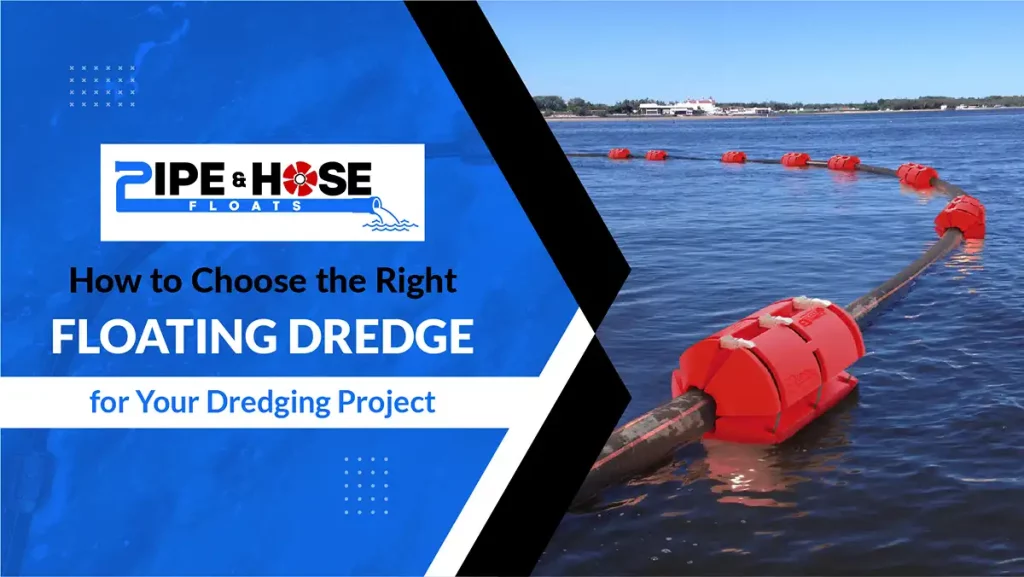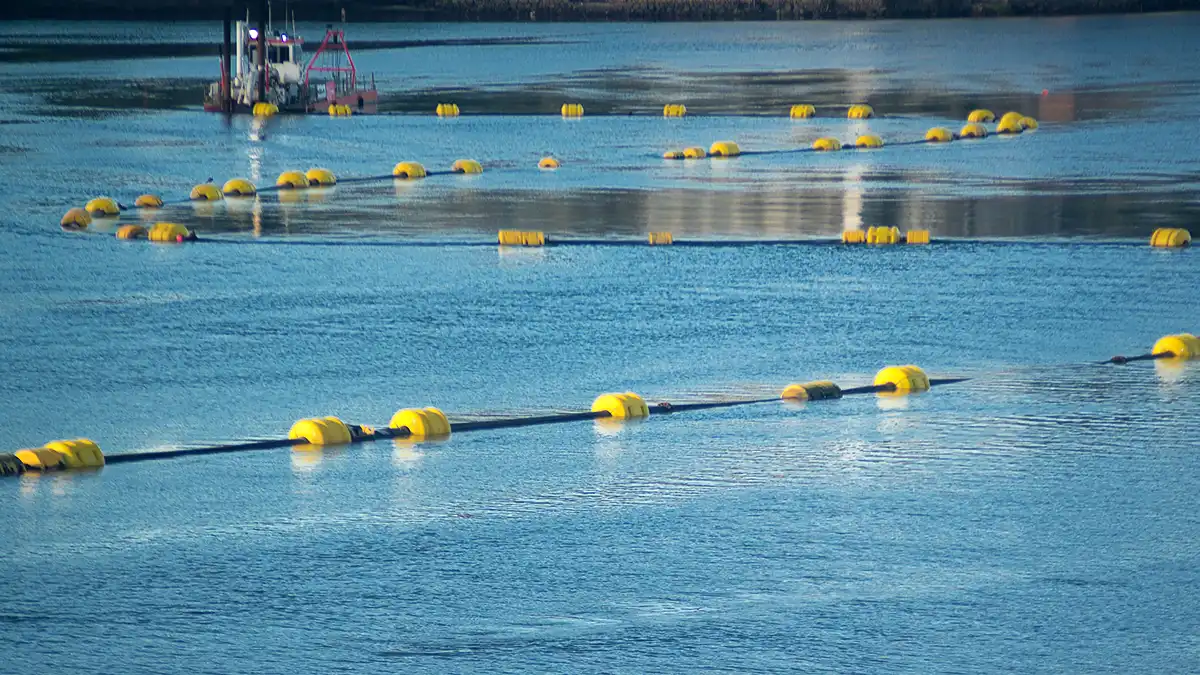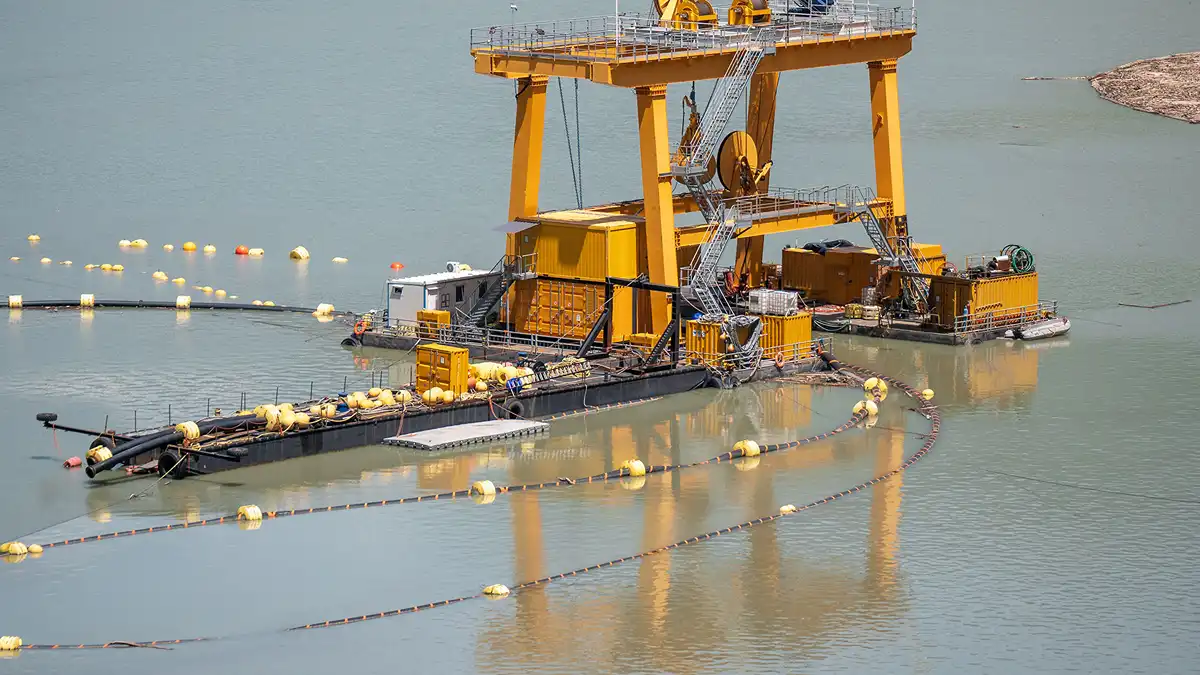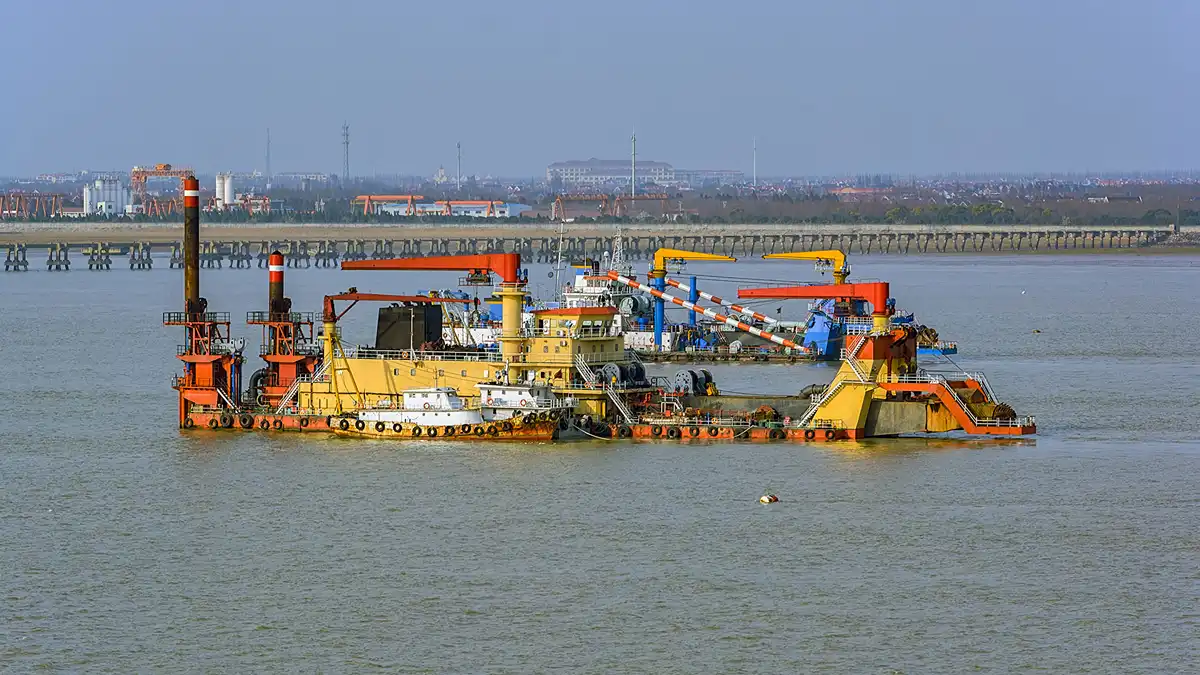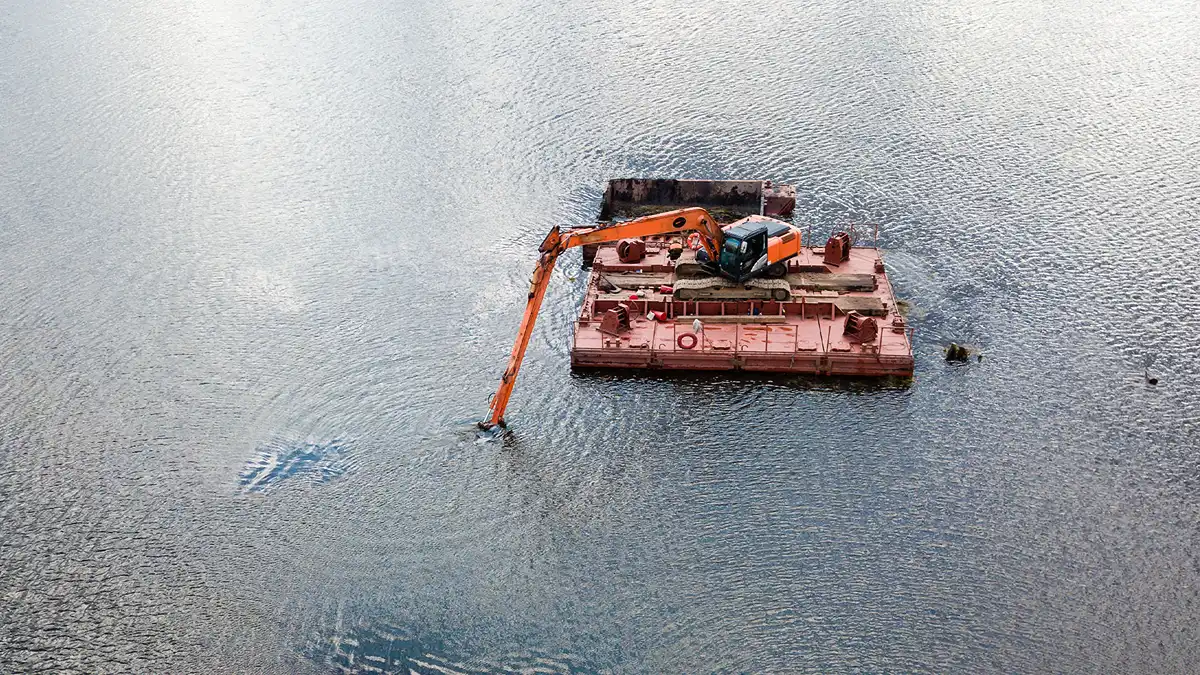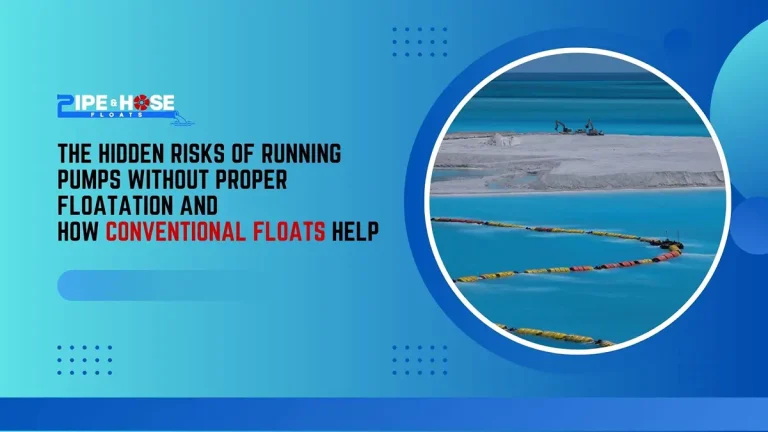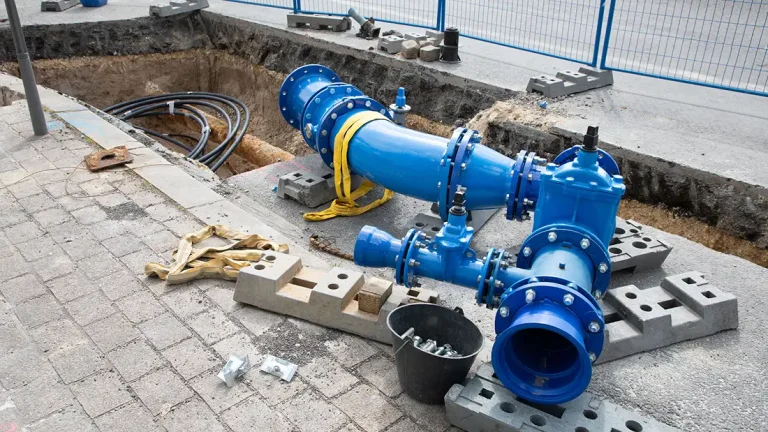Introduction
Selecting the ideal equipment for a dredging project is a critical factor that can greatly influence its success. Among the key machinery used in such operations is the floating dredge—a highly specialized machine designed to excavate materials from underwater and transport them to the surface. They are indispensable across a wide range of industries, including mining, environmental restoration, and waterway maintenance.
Choosing the right floating dredge involves a thoughtful evaluation of various elements, such as the size of the dredge, its efficiency, and its overall suitability to meet the specific demands of your project. Each dredging task is unique, requiring equipment tailored to its distinct challenges and objectives. For example, the requirements of a gold mining operation differ significantly from those of clearing sediment from a waterway or restoring an aquatic ecosystem.
This guide aims to simplify the selection process by providing you with a comprehensive overview of the key considerations when choosing a floating dredge. From understanding the differences between dredge floats and gold dredge floats to evaluating project requirements, this article covers everything you need to make an informed decision. By ensuring that your equipment aligns perfectly with your project’s goals, you can enhance operational efficiency, reduce costs, and achieve successful outcomes with minimal environmental impact.
1. Understanding Floating Dredge
It is a versatile and essential piece of equipment designed for efficient dredging operations in aquatic environments. These machines play a vital role in various industries, including mining, waterway maintenance, and environmental restoration. The term “floating” refers to the dredge being supported by buoyant structures, such as dredge floats or gold dredge floats, which allow it to function effectively in different water depths.
They are adaptable and can be customized to meet the unique requirements of specific projects. Whether it’s extracting valuable minerals, clearing sediment, or restoring ecosystems, these machines are engineered to perform efficiently and reliably. The buoyant dredge floats provide the necessary stability and support, ensuring smooth operations even in challenging conditions.
Gold dredge floats, in particular, are designed to meet the demanding needs of gold mining operations. These specialized floats offer enhanced durability and precision, enabling miners to extract gold efficiently from riverbeds and other water-based deposits. Their robust construction and targeted design make them ideal for enduring the rigors of mining environments.
In summary, they are indispensable tools for a wide range of dredging applications. Their versatility, stability, and ability to operate in varying water depths make them an invaluable asset for projects requiring precision, efficiency, and reliability.
2. Key Factors to Consider When Choosing a Floating Dredge
Selecting the right floating dredge involves evaluating several critical factors. Below, we outline the key considerations to guide you in making the best choice for your project.
Project Requirements
The first step in selecting a floating dredge is understanding your project’s unique requirements. Are you mining for gold, clearing sediment, or restoring a fragile ecosystem? Each type of project demands specific capabilities from a dredge. For instance:
- Mining Projects: Gold dredges equipped with gold dredge floats are ideal for extracting valuable minerals from riverbeds or other water-based deposits. Their precision and durability make them well-suited for the rigorous demands of mining operations.
- Waterway Maintenance: Projects involving the removal of debris or sediment often require larger dredges with enhanced suction capabilities to manage high volumes of material efficiently.
- Environmental Restoration: For projects aimed at restoring ecosystems, lightweight and eco-friendly floating dredge is typically preferred. These models minimize disruption to delicate aquatic environments while still achieving the desired results.
Clearly defining your project’s goals will help you determine the type, size, and features of the floating dredge that best suits your needs.
Size and Design
The size and design of a floating dredge significantly affect its performance and applicability. Larger dredges with robust dredge floats are ideal for extensive operations, such as large-scale mining or waterway clearance. In contrast, smaller, more maneuverable models are better suited for confined spaces or shallower waters.
Stability is a critical aspect of design. High-quality dredge floats ensure that the dredge remains steady during operations, even under challenging conditions. For example, gold dredge floats are specifically engineered to provide superior support and stability, which is crucial for mining applications where precision is paramount.
Efficiency and Performance
Efficiency plays a vital role in the selection process. They are designed to maximize productivity while minimizing operational costs. Key features such as advanced suction systems, energy-efficient motors, and automated controls contribute to superior performance. Efficient dredging operations not only save time and resources but also reduce the environmental impact of your project, making it a win-win for both cost-effectiveness and sustainability.
Durability and Maintenance
Durability is another essential consideration. High-quality of them are constructed from materials that can withstand harsh operating conditions, such as saltwater environments or abrasive sediments. Investing in durable equipment reduces the risk of breakdowns and extends the lifespan of your dredge.
Equally important is ease of maintenance. Choose models designed with replaceable parts and minimal downtime requirements. Regular maintenance is crucial to keep your dredge operating at peak efficiency, ensuring the success of your project.
In summary, selecting the right floating dredge requires careful consideration of project-specific needs, size and design, efficiency, and durability. By thoroughly evaluating these factors, you can ensure that your equipment aligns perfectly with your objectives, delivering reliable and effective performance throughout your dredging project.
3. Choosing Between Dredge Floats and Gold Dredge Floats
Understanding the differences between dredge floats and gold dredge floats is essential for selecting the right equipment for your project. Both types of floats play a crucial role in supporting dredging operations, but they are designed for distinct applications and challenges.
Dredge Floats
Dredge floats are versatile and general-purpose buoyant devices that provide stability and support to the dredge and its associated equipment. They are commonly used in projects involving sediment removal, waterway maintenance, or environmental cleanup. Designed to endure various water conditions, these floats are constructed to ensure long-lasting performance and reliability. Their adaptability makes them suitable for a wide range of dredging tasks, offering excellent support in diverse environments.
Gold Dredge Floats
Gold dredge floats, on the other hand, are specifically engineered for gold mining applications. They are typically more robust and durable than standard dredge floats, as they are built to withstand the demanding conditions of extracting minerals from challenging environments. These floats often feature specialized designs that enhance stability and efficiency, ensuring that gold mining operations can proceed smoothly and effectively. Their ability to handle abrasive materials and rough conditions makes them indispensable for mining projects.
Factors Influencing Float Selection
The choice between dredge floats and gold dredge floats depends on several factors:
- Water Depth: Deeper water may require more robust floats to ensure the dredge’s stability and performance.
- Current Strength: In areas with strong currents, high-quality floats are essential to maintain the dredge’s position and operational integrity.
- Dredging Material: Gold mining operations often involve abrasive materials, necessitating the use of durable gold dredge floats that can withstand wear and tear.
By evaluating these factors, you can determine which type of float aligns with your project’s specific requirements. Selecting the appropriate floats ensures optimal performance, stability, and efficiency, contributing to the overall success of your dredging project.
4. Matching a Floating Dredge to Your Project’s Needs
Selecting the right floating dredge for your project is crucial to ensure its efficiency, productivity, and overall success. A floating dredge is a specialized piece of equipment used for material removal from bodies of water. Whether you are working on a large construction site, mining project, or environmental remediation, the key to maximizing performance lies in understanding your project’s specific requirements. Below are some detailed factors that can help you match the right floating dredge to your needs.
Assessing Your Project’s Scope
The first step in choosing the right floating dredge is to evaluate the scope of your project. Consider factors such as the volume and type of material you need to dredge. For larger-scale projects with high volumes of sediment or debris, a high-capacity floating dredge is typically necessary. These dredges are designed to handle large quantities of material efficiently, making them ideal for extensive dredging tasks in harbors, shipping lanes, or industrial projects. On the other hand, smaller-scale operations, such as dredging in recreational lakes or ponds, can benefit from compact, maneuverable models. These smaller dredges are easier to operate, more cost-effective, and can access tighter spaces while maintaining effective material removal.
Understanding the type of material being dredged is equally important. Some of them are designed specifically for sediment, while others can handle materials like sand, gravel, or even mining tailings. For instance, if you are involved in gold dredging, it’s essential to ensure that the dredge is compatible with the specific requirements of gold mining operations, such as handling fine sediments and providing efficient recovery methods.
Evaluating Environmental Conditions
Once you have assessed your project’s scope, the next critical factor to consider is the environmental conditions in which the dredge will operate. This includes evaluating the water depth, current strength, and other local environmental factors that could impact the dredging process. For instance, shallow waters may require a dredge with a shorter reach or a design that allows for greater maneuverability in confined spaces.
Additionally, the strength of the current in the operating area will influence the stability and performance of the dredge. In strong currents or deep water conditions, a more robust dredge with enhanced buoyancy and stability will be required to maintain consistent performance. You also need to assess the overall weather and water conditions. Dredging in rough or unpredictable waters might necessitate the use of more specialized, durable dredging equipment that can operate effectively under these circumstances.
Ensuring Compatibility
A crucial aspect of selecting a floating dredge is ensuring that the dredge and its accessories are compatible with each other. This compatibility includes ensuring that the dredge, suction system, and floatation devices work together seamlessly. For example, if you are working with a gold dredge, you must choose the appropriate gold dredge floats. These floats should be specifically designed to support the dredge’s weight and ensure that it remains stable during operations in deeper or more turbulent waters.
Another key factor in ensuring compatibility is assessing the dredge’s capability to interface with other equipment used in the project. Some dredges come with specialized attachments for excavation, material transfer, or even on-site processing. Be sure to match the dredge to your accessories, whether you need dredging pumps, suction hoses, or sediment separation systems.
5. Budget Considerations
Budget is a critical factor in any equipment purchase. While it may be tempting to opt for the least expensive option, it’s essential to consider the long-term costs associated with maintenance, repairs, and operational efficiency. Investing in a high-quality floating dredge with durable dredge floats or gold dredge floats can result in significant cost savings over time.
Balancing Cost and Performance
Look for equipment that offers the best balance between cost and performance. A slightly higher upfront investment in a more efficient dredge can lead to reduced operational expenses and increased productivity.
Long-Term Savings
High-quality materials and construction ensure that the dredge and its components last longer, reducing the need for frequent replacements. This durability translates into long-term cost savings and fewer interruptions to your project timeline.
6. Where to Find Quality Floating Dredge and Accessories
Finding a reliable supplier is essential when purchasing a floating dredge and its necessary accessories. The right supplier will provide high-quality, durable equipment that ensures your dredging project runs smoothly and meets its objectives.
To identify a reputable supplier, focus on these key factors:
- Customer Reviews: Check reviews and testimonials from past customers to evaluate the supplier’s reliability and product quality. Positive feedback from satisfied clients is a good indicator of a trustworthy supplier.
- Warranties: Ensure the equipment comes with a robust warranty. A comprehensive warranty offers protection for your investment and guarantees support in case of unexpected issues.
- After-Sales Support: A dependable supplier provides ongoing assistance, including maintenance services, technical support, and easy access to spare parts. This level of support helps you avoid costly downtime and ensures that your equipment operates efficiently over the long term.
- Product Range: Look for suppliers offering a wide range of dredging equipment, including both standard dredge floats and specialized gold dredge floats. A diverse inventory increases the likelihood of finding equipment tailored to your project’s unique requirements.
Partnering with a supplier that prioritizes quality and customer service ensures that your floating dredge and its components perform at their best. High-quality equipment not only enhances efficiency but also reduces long-term operational costs and minimizes environmental impact. By choosing the right supplier, you can set your dredging project up for success, ensuring timely completion within budget and with optimal results.
Conclusion
Selecting the right floating dredge is a fundamental step in ensuring the success of your dredging project. Each project comes with unique demands, and evaluating factors such as project scope, size, efficiency, and durability of the equipment is essential. A well-chosen floating dredge can significantly enhance productivity and ensure smooth operations tailored to your specific needs.
Equally important is understanding the role of dredge floats and gold dredge floats. These floats provide critical stability and performance, ensuring that the dredging equipment operates effectively even in challenging conditions. While standard dredge floats are suitable for general applications, gold dredge floats are specifically designed for mining operations, offering enhanced durability and precision. Selecting the correct float type will optimize your equipment’s functionality and contribute to the overall success of your project.
Investing in high-quality equipment not only improves efficiency but also minimizes long-term operational costs and environmental impact. Durable machinery requires less frequent maintenance, reducing downtime and increasing the overall lifespan of the equipment. This makes quality an essential consideration when choosing both of them and their supporting components.
By planning carefully and making informed decisions, you can ensure that your dredging project is completed successfully. Whether you are working on mining, environmental restoration, or waterway maintenance, the right floating dredge can help you achieve your goals efficiently, on schedule, and within budget.

